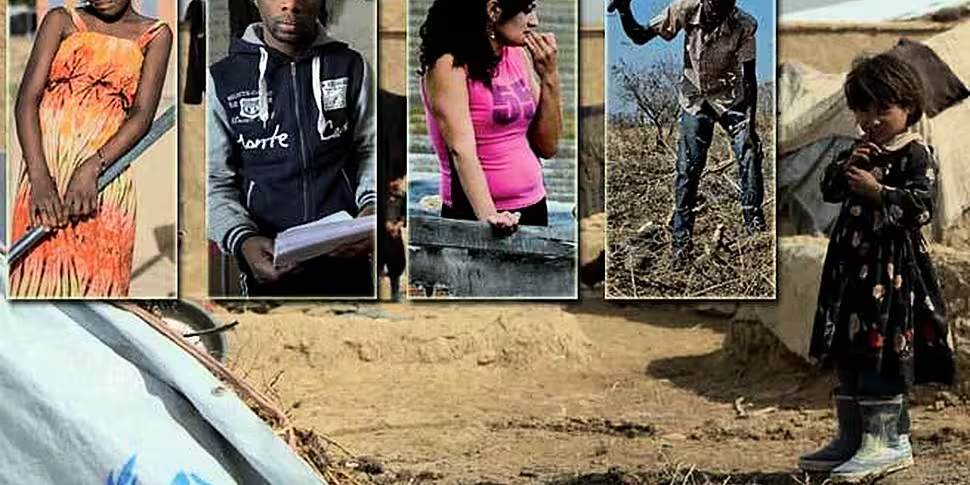The number of displaced people across the world is now higher than it was after World War II.
World Refugee Day is being marked by a sombre milestone in a year that has seen crises force desperate people to flee their homes.
A new UN report reveals that the number of refugees, asylum-seekers and internally displaced people has, for the first time in the post-World War II era, now exceeded 50 million.
The annual global trends report by the UN High Commissioner for Refugees (UNHCR), states that even as the war in Syria continued to grind on, millions of individuals were forcibly displaced in other parts of the world - notably in the Democratic Republic of the Congo, the Central African Republic, Mali, and the border area between South Sudan and Sudan.
By the end of 2013, an estimated 51.2 million people worldwide were considered to be forcibly displaced due to persecution, conflict, generalised violence, or human rights violations
These included 16.7 million refugees, 33.3 million internally displaced persons (IDPs), and close to 1.2 million people whose asylum applications had not yet been adjudicated.
"We are seeing here the immense costs of not ending wars, of failing to resolve or prevent conflict" said High Commissioner for Refugees, António Guterres.
"Peace is today dangerously in deficit. Humanitarians can help as a palliative, but political solutions are vitally needed. Without this, the alarming levels of conflict and the mass suffering that is reflected in these figures will continue" he added.
The global total has implications both for foreign aid budgets in donor nations and the absorption and hosting capacities of countries on the front lines of refugee crises, the UNHCR says.
Global forced displacement 1993-2013 © UNCHR
The annual report - entitled 'War’s Human Cost' - is based on data compiled by governments, non-governmental partner organisations, and from the agency’s own records.
It notes that the Syrian crisis, entering into its third year in 2013, was the primary cause of these outflows, as highlighted by two dramatic milestones.
In August, the one millionth Syrian refugee child was registered; only a few weeks later, UNHCR announced that the number of Syrian refugees had passed two million.
"The Syrian Arab Republic had moved from being the world’s second largest refugee-hosting country to being its second largest refugee-producing country – within a span of just five years" the report says.
The annual survey also notes that 3.5 million refugees, or one-third of the global total, were residing in countries covered by UNHCR’s Asia and Pacific region.
Major source of refugees, 2013 © UNHCR
Of these, more than 2.4 million were Afghans (69%) in Pakistan and Iran. Sub-Saharan Africa was host to more than 2.9 million, or one-quarter of all refugees, primarily from Somalia (778,400), Sudan (605,400), the Democratic Republic of the Congo (470,300), the Central African Republic (251,900), and Eritrea (198,700).











